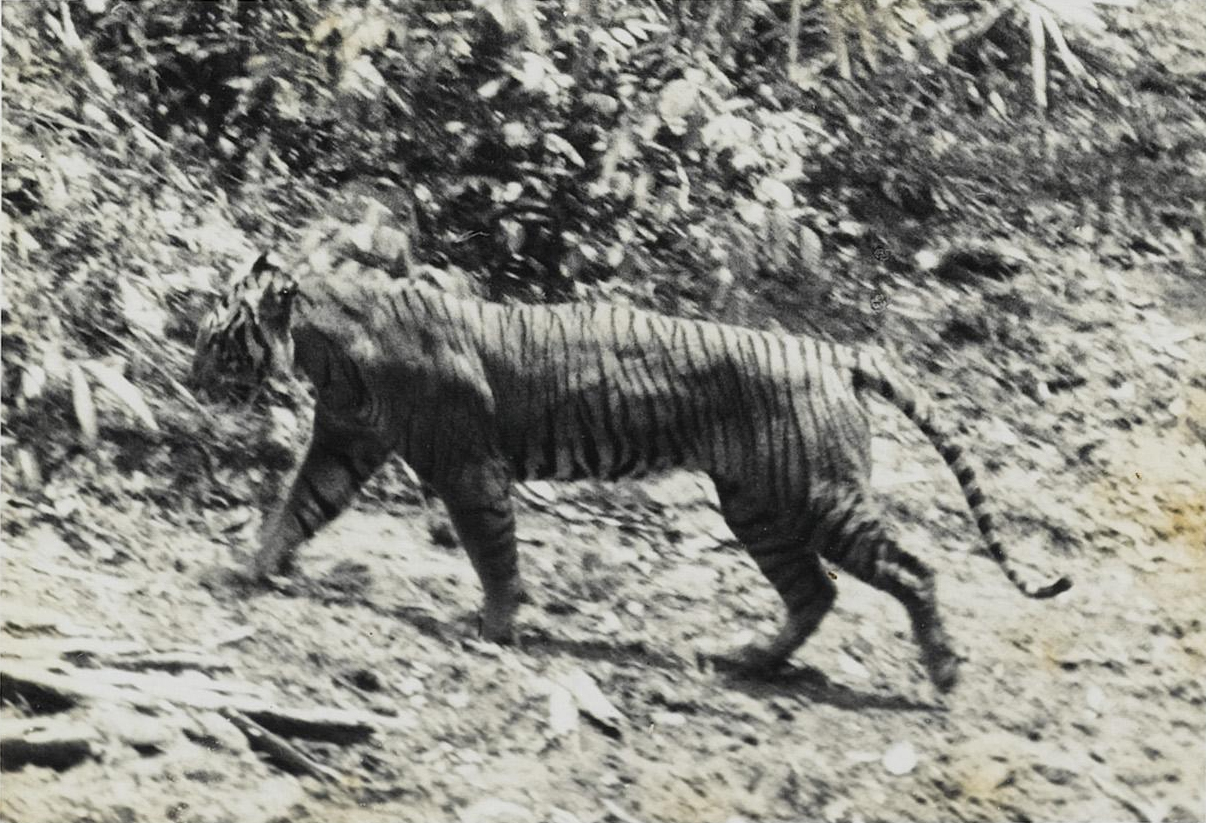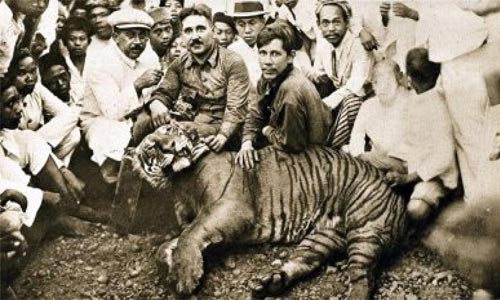Javan Tiger May Not Be Extinct

These big cats apparently went extinct in the 1980s, but new research suggests this may not be the case.
Recent DNA analysis suggests that a species of Indonesian tiger once declared extinct may still exist. Much more research is needed to reach a definitive conclusion, but conservationists say there is a glimmer of hope that the Javan tiger may still roam the island's forests.
The Javan tiger (Panthera tigris sondaica) was categorized as Extinct on the IUCN Red List in 2008. Since then, there have been a handful of potential sightings, each without solid evidence to support them. But in 2019, locals spotted what they thought was a Javan tiger near the village of Cipendeuy in West Java's South Sukabumi forest, along with footprints and claw marks. They collected a single hair from a nearby fence.
Analysis of this hair suggests that it belongs to a Javan tiger, but more research is needed to confirm its existence. The team concludes: "Further genetic and field studies are needed to confirm whether the Javan tiger does indeed live in the wild."
Nevertheless, the possibility has sparked public interest and even efforts among Indonesian conservationists to investigate whether the "extinct" big cat is actually still alive.
"The research has led to speculation that the Javan tiger is still in the wild," Satyawan Pudyatmoko, an Indonesian ministry official in charge of conservation affairs, told Reuters. "We have prepared and will prepare our efforts to respond to this."
According to Reuters, these efforts include setting camera traps and conducting extensive DNA scans, as well as seeking advice from genetic experts to identify tigers that may have remained in the wild.
The Javan tiger, native to Indonesia, was one of three tiger subspecies previously found in the country. In 2013, the Balinese tiger (P. tigris balica) was also declared extinct by the IUCN, leaving only the Sumatran tiger (P. tigris sumatrae).
Hunting and habitat destruction are thought to be among the reasons for the extinction of the Javan subspecies
In the new study, scientists analyzed mitochondrial DNA (mtDNA) (genetic material found outside the nucleus and passed down from the mother) from hair and compared it with a museum specimen of a Javan tiger collected in 1930. Hair samples from various tiger subspecies and the Javan leopard (Panthera pardus melas) were used as controls.
"From this comprehensive mtDNA analysis, we conclude that the hair sample from South Sukabumi belongs to a Javan tiger and belongs to the same group as the Javan tiger museum specimen collected in 1930," the team writes.
Whether this subspecies still exists in the wild is another matter. But with the efforts inspired by the recent discovery, we may soon find out - and then, if it turns out that there are still some Javan tigers out there, we will have to do all we can to protect them.
"For example, if it is proven to still exist, it will definitely become a protected animal," Pudyatmoko told AFP. "It is the obligation of all parties, including society, to participate in the protection of their population."
Thanks for reading.













































